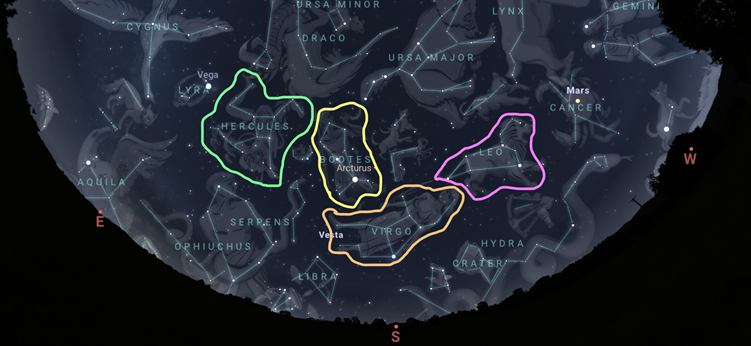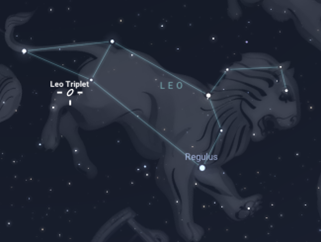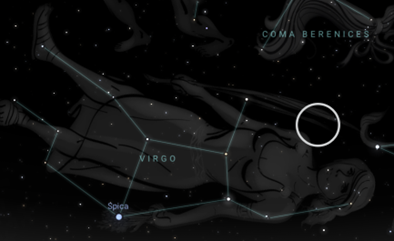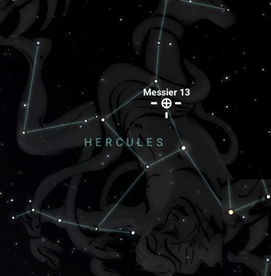What's Up? May 2025
As the summer nights grow shorter and lighter, May still has plenty to offer skywatchers. Explore, with our astronomer Ishbel, constellations like Leo, Virgo and Hercules, Discover deep-sky treasures including galaxy clusters, and catch the Eta Aquarids meteor shower at its peak. With bright stars forming the Spring Triangle and planets visible morning and night, there's something for every stargazer!
Hello skies of blue, goodbye skies of dark!
As we enter summer once again, the nights are getting shorter and lighter. On May 1st, the Sun sets at 8:24 PM and rises just 9 hours later at 5:33 AM. By the end of May, sunset shifts to 9:00 PM and sunrise to 4:51 AM.
With the hours after sunset and before sunrise still quite bright, we only get around three hours of true darkness before the sun begins to reclaim the sky. You'll have to stay up a little later to catch the stars - but May has plenty in store to temot you to turn your gaze upwards!
CONSTELLATIONS

Leo the Lion is high in the sky! This lovely, large constellation is easy to spot - its head is shaped like a backwards question mark, its body is formed by a rectangle and a triangle.

Following Leo across the sky from east to west is Virgo, the Maiden. She's a bit trickier to find, as her shape isn't made up of easily recognisable patterns. She's meant to resemble a stick figure lying down and, as the second largest constellation in the sky, she stretches across a wide area. The easiest of her stars to spot are Spica, representing her hand closest to the ground, and Porrima, marking her heart.
 Leo and Virgo are home to some beautiful galaxy clusters, making them excellent telescope targets!
Leo and Virgo are home to some beautiful galaxy clusters, making them excellent telescope targets!
The Leo Cluster is located near the star Algieba (Gamma Leonis) and contains several bright galaxies, including M65, M66, and NGC 3628, collectively known as the Leo Triplet.
The Virgo Cluster can be found by locating the star Vindemiatix (Epsilon Virginis) and moving toward the centre of the constellation. This massive cluster contains over 1,300 galaxies, with notable members like M87, a giant elliptical galaxy.
Bootes is another loud and proud constellation, known as the Herdsman. You can find him arcing out of the panhandle of the Plough towards Arcturus. This bright star marks his waist. From there, you'll see a kite shape extending to the left and two "running legs" to the right.
Spica is a beautiful, bright blue star. Along with Regulus - the star at the bottom of Leo's backwards question mark (his chest) - and Arcturus, the waist of Bootes, they form the Spring Triangle.
Hercules is also prominet in the night sky. This constellation is home to the Great Hercules Cluster (M13), a globular cluster containing several hundered thousand stars. M13 is located between the stars Eta and Zeta Herculis, and is visible with binoculars or a small telescope.


CELESTIAL EVENTS
Eta Aquarids Metero Shower
Peaking on the night of May 5-6th, this meteor shower is known for its fast moving meteors, which travel at about 41 miles per second. Although the Northern Hemisphere typically sees a modest rate of 10-30 meteors per hour, it can still be a delightful sight - especially in the predawn hours.
PLANETS
Venus - Visible in the east before sunrise
Mars - Visible in the east after sunset
Jupiter - Visible in the southwest after sunset
Saturn - Visible in the east before sunrise
MOON PHASES
May 1st - First Quarter Moon
May 11th - Full Moon
May 19th - Last Quarter Moon
May 26th - New Moon
Wishing you clear skies and happy stargazing!
















